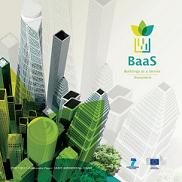Project Objectives
The BaaS system aims to optimize energy performance in the application domain of non-residential buildings in operational stage. In the building operational life-cycle three significant tasks have to be continuously performed: collect information and assess the buildings current state; predict the effect that various decisions will have to Key Performance Indicators (KPIs) optimization.
A generic ICT-enabled system will be developed to provide integrated assess, predict, optimize services that guarantee harmonious and parsimonious use of available resources.
This major objective is also pursued within BaaS via a number of multifaceted actions and Scientific & Technological Objectives:
Scientific Objectives SO1
- Development of building modelling and simulation for energy performance estimation and control design.
Scientific Objectives SO2
- Development of integrated Automation and Control Services.
Technological Objective TO1
- Development of data Management: Working on existing initiatives and ongoing projects results, integrating State of the Art of extended BIM, EEB Ontologies and Standards.
Technological Objective TO2
- Development of middleware Platform: System Integration, Interoperability And Standards
Approach
The BaaS system comprises four components:
- A data management component to collect, organize, store and aggregate data from various in- and out-of-building sources. An (IFC-based) BIM will act as a central repository for all static building data, and a data warehouse will be used for dynamic data.
- A service middleware platform to abstract the building physical devices, support high level services on the cloud and facilitate secure two-way communication between the physical and ICT layers (building) with high level services (cloud).
- Energy models for performance estimation and for control services, looking for a trade-off between prediction accuracy (performance estimation) and computational complexity (fast-model for control design).
- Assessment, Prediction and Optimization Service such as:
- Assessment and prediction services: simulation models, acting as surrogates of the real building, incorporating sensor dynamic data, will be used to assess performance and comprehensively estimate the values of relevant KPIs as well as help perform sensitivity analyses;
- Optimization service, automatically will generate holistic nearly-optimal control strategies with the goal of achieving operational efficiencies as measured through relevant KPIs and will be imbued with adaptive and re-configurability properties to respond to faults and atypical scenarios.
Upon verification of component interoperability, and development of a measurement and verification plan, the BaaS system will be demonstrated in two buildings and will be validated as an Energy Conservation Measure with Energy-Services Companies as the end-user.
End-user acceptance will be accomplished by analyzing the replication potential in tandem with the results of a sensibility study.





